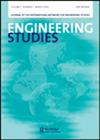Mastering the Hard Stuff: The History of College Concrete-Canoe Races and the Growth of Engineering Competition Culture
IF 1.3
3区 工程技术
Q2 EDUCATION, SCIENTIFIC DISCIPLINES
引用次数: 1
Abstract
ABSTRACT This article details the history of college engineering competitions, originating with student concrete-canoe racing in the 1970s, through today’s multi-million-dollar international multiplicity of challenges. Despite initial differences between engineering educators and industry supporters over the ultimate purpose of undergraduate competitions, these events thrived because they evolved to suit many needs of students, professors, schools, corporations, professional associations, and the engineering profession itself. The twenty-first-century proliferation of university-level competitions in turn encouraged a trickling-down of technical contests to elementary-age children and high schools, fostering the institutionalization of what might be called a competition culture in engineering.掌握硬道理:大学混凝土皮划艇比赛的历史与工程竞赛文化的成长
摘要本文详细介绍了大学工程竞赛的历史,它起源于20世纪70年代的学生混凝土独木舟比赛,经历了当今价值数百万美元的国际挑战。尽管工程教育工作者和行业支持者最初在本科生比赛的最终目的上存在分歧,但这些活动之所以蓬勃发展,是因为它们适应了学生、教授、学校、公司、专业协会和工程专业本身的许多需求。21世纪大学级别比赛的激增反过来又鼓励了技术比赛逐渐渗透到小学和高中,促进了所谓的工程竞赛文化的制度化。
本文章由计算机程序翻译,如有差异,请以英文原文为准。
求助全文
约1分钟内获得全文
求助全文
来源期刊

Engineering Studies
ENGINEERING, MULTIDISCIPLINARY-HISTORY & PHILOSOPHY OF SCIENCE
CiteScore
3.60
自引率
17.60%
发文量
12
审稿时长
>12 weeks
期刊介绍:
Engineering Studies is an interdisciplinary, international journal devoted to the scholarly study of engineers and engineering. Its mission is threefold:
1. to advance critical analysis in historical, social, cultural, political, philosophical, rhetorical, and organizational studies of engineers and engineering;
2. to help build and serve diverse communities of researchers interested in engineering studies;
3. to link scholarly work in engineering studies with broader discussions and debates about engineering education, research, practice, policy, and representation.
The editors of Engineering Studies are interested in papers that consider the following questions:
• How does this paper enhance critical understanding of engineers or engineering?
• What are the relationships among the technical and nontechnical dimensions of engineering practices, and how do these relationships change over time and from place to place?
 求助内容:
求助内容: 应助结果提醒方式:
应助结果提醒方式:


